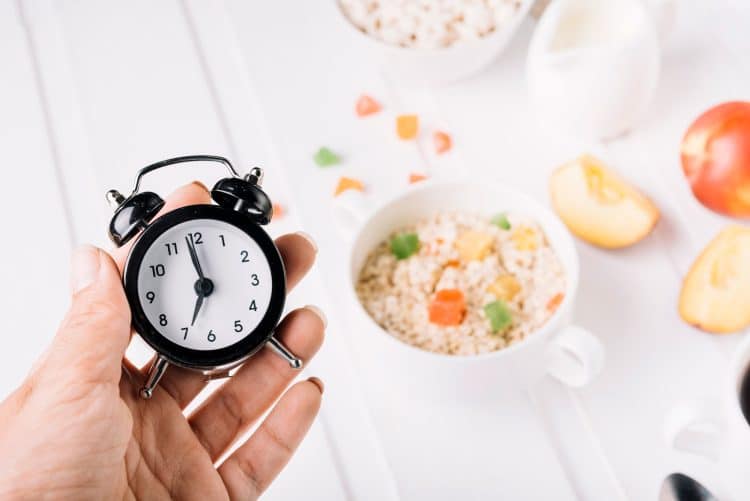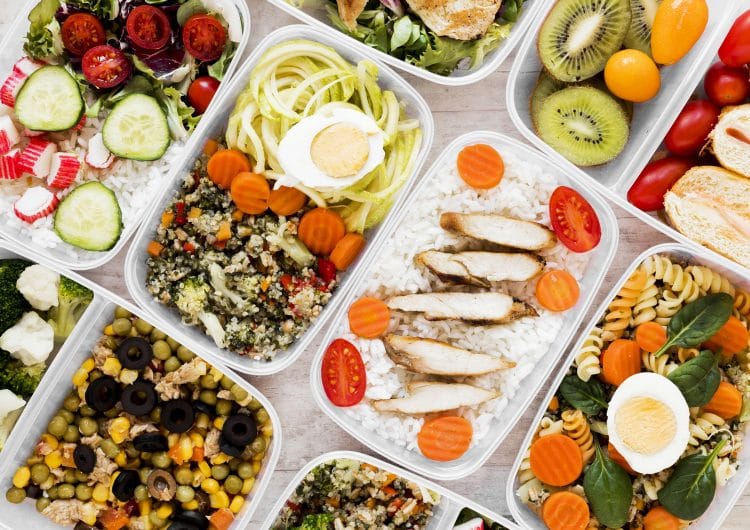Most people join a gym or start dieting to lose weight. However, most of these folks quit the fitness lifestyle before meeting their weight loss objective. There are several reasons for these weight loss lapses.
Failing to set a weight loss goal is one of the biggest reasons most people never make progress. You must have a definite objective and a plan to achieve it before you embark on your fitness journey.
Ask a newbie in your gym about their fitness goal, and they probably reply with ‘lose weight’ or ‘build muscle.’ However, these goals are too vague to set you on the right path. Your fitness goals must be more actionable and specific to push you in the right direction. For example, you must switch from ‘lose weight’ to ‘lose 50 pounds in six months.’ The new goal is specific, measurable, attainable, relevant, and time-bound.
The new goal gives you the exact amount of weight you must lose in a particular period. Before we go any further, let’s take a step back. Most dieters have no idea what to expect from a weight loss program. They know they need to lose weight but are unsure of what is attainable.
Tell a newbie exerciser that he must lose 50 pounds in six months, and they will look like they’ve seen a ghost. In this article, we will give you 23 tips for losing 50 pounds in six months. Additionally, you’ll learn about how much weight you should aim to lose safely in a given period. There is a lot to cover, so sit tight and read on.
23 Tips For Losing 50 Pounds in Six Months

Losing 50 pounds in 26 weeks might sound impossible to people struggling with weight loss. However, it is entirely possible with the right approach. Here are the 23 tips for weight loss that will help you see the needle budge in the right direction:
Set Realistic Goals
Most people falter on the first step of their weight loss journey as they have no clue about setting an achievable goal. Some people start exercising without a specific goal, whereas others begin with a vague objective.
Your weight loss goal should be realistic, objective, and actionable. Trying to lose too much weight too soon will lead to disappointment, and most people in this category drop off their weight loss journey as they are overwhelmed with the big numbers staring them in their faces.
You must break your main objective into smaller goals to make your weight loss journey less intimidating. Furthermore, checking smaller goals off your list each week will work as positive reinforcement and keep you motivated.
Related: Weight Loss Target Date Calculator
Run a Calorie Deficit

You must enter a calorie deficit to shed excess weight, meaning you have to burn more calories daily than you consume. However, most people have no idea how many calories they should cut out from their diet to lose the spare tire.
It is believed that you can lose a pound weekly if you cut 500 calories from your daily diet. Similarly, reducing 1,000 calories from your diet will help you lose two pounds each week. The Centers for Disease Control and Prevention recommends limiting your daily calorie cut to 1,000 kcal to keep your weight loss journey gradual, steady, and sustainable. [1]
Cutting 1,000 calories from your daily diet will help you lose 50 pounds in 25 weeks (2 kcal X 25). Notably, six months roughly consist of 26 weeks, meaning you can safely lose 52 pounds in half a year. This proves that our goal of losing 50 pounds in six months is attainable and safe.
Notably, you don’t have to cut 1,000 calories exclusively from your diet to enter a deficit. If this was the case, losing two pounds every week would be near impossible for folks consuming 2,000-2,500 kcal daily.
To achieve the 1,000-calorie deficit, you should cut 500 calories from your diet and burn the remaining 500 calories through an exercise program. This is why following an effective diet and exercise program is a must for achieving your weight loss goals.
Nutrient-Dense Foods
You must follow a personalized diet program to meet your weight loss goals. Plus, your diet should consist of nutrient-dense whole foods as they are rich in vitamins, minerals, and fiber, which keep you feeling full throughout the day.
Depending on your dietary preferences, your meals should comprise veggies, fruits, grains, non-starchy carbs, and a source of lean protein. Furthermore, you must reduce your sugar intake to limit visceral fat buildup.
Controlling your portion sizes can help ensure you don’t overshoot your calorie intake goals. Invest in a food scale or measuring cups to ensure you eat the correct portions of each food. Additionally, switching to smaller plates and bowls can help curb the risk of overeating.
You must also develop the habit of reading nutrition labels before buying packed foods. It will ensure that you only buy foods that fit your macro goals and stay away from ‘dirty calories.’ Whole foods are generally lower in calories than processed and junk foods, making them a perfect fit for your weight loss journey.
Calculate Your BMR

The role of basal metabolic rate (BMR) is often overlooked in a weight loss program. BMR determines the calories your body needs to accomplish its most basic (basal) life-sustaining functions. BMR is often used interchangeably with resting metabolic rate (RMR).
Your BMR depends on multiple factors, including age, body size, amount of lean muscle tissue, gender, genetics, etc. According to the BMR calculations, a 25-year-old, 180-pound, 5-foot-10-inch male burns 1,910 daily calories when not working out or moving around.
To lose a pound of body weight weekly, this individual will have to cut 500 calories from his diet, meaning he’ll be consuming 1,410 daily calories. Furthermore, if this individual wants to shed an additional pound, he should burn an extra 500 calories during an exercise regimen.
Alternatively, you could determine your average daily calorie intake using a calorie-tracking app, such as MyFitnessPal, by analyzing your calorie intake for the last five days. Once you have your average calorie intake number, deduct 500 calories from your diet by reducing your serving size across all meals or skipping a meal. This will help you lose a pound of body weight weekly.
Remember, everyone is built differently and responds to different stimuli uniquely. Finding the right amount of calories to cut from your daily routine might require some trial and error.
Related: Weight Loss Calculator
Reevaluate Your Macros

Understanding the three macronutrients (carbohydrates, proteins, and fats) is a must for fitness enthusiasts. You must limit your carb and fat intake during a weight loss program and follow a protein-rich diet.
Notably, many people consider carbs their arch-enemies in a weight loss program. However, cutting out carbs entirely from your diet will be a blunder as your body relies on glycogen (which comes from carbohydrates) as its primary energy source.
Minimize the intake of refined carbohydrate foods such as white bread, white rice, pasta, baked goods, sugary drinks, sweets, and junk food. You must consume at least 130 calories daily to maintain your overall health and performance. [2]
According to a study, your macronutrient split should be between fat (40%-20%), carbs (35%-65%), and protein (25%-15%) to promote weight loss. [3]
Exercise
Although exercising is not mandatory on a weight loss program, working out three to six days a week can help speed up your results. A 150-pound individual can burn around 500 calories in about 40 minutes if they maintain a 12-minute mile pace (5 mph).
You must include cardiovascular and strength training into your training regime for optimal weight loss results.
Cardio
Your training sessions should consist of aerobic and anaerobic workouts to optimize weight loss. Furthermore, HIIT workouts (high-intensity interval training) are incredibly effective at burning calories. They are also usually shorter than conventional cardio workouts, making them an excellent fit for people with busy schedules. [4]
Strength Training
Many people leave gains on the table by staying away from the free weight section during their weight loss program. Strength training helps burn calories during a workout and increases your metabolic rate, which enables you to burn more calories throughout the day, even when you’re physically inactive. [5]
Check Out: Calories Burned Running Calculator
Hire a Nutritionist and Personal Trainer

Contrary to what most people think, designing a diet program falls out of the scope of practice for a certified personal trainer. While a personal trainer can help you with a personalized training plan according to your physical fitness levels, limitations, and goals, you must seek a registered nutritionist’s help for a customized diet plan.
You could ask your trainer for a dietitian’s reference. The nutritionist and trainer can work together to streamline your training and recovery program and maximize your output.
You could design a training and diet program on your own; however, it will require significant trial and error. Hiring a nutritionist and trainer can help save you a tremendous amount of time, effort, and money in the long run.
Furthermore, a personal trainer can help you build a solid training foundation by teaching you the correct exercise form, which can lower your risk of injury.
Lifestyle Changes
Your weight loss program should not be limited to your diet and training program. Losing 50 pounds in six months demands a lifestyle change. You must make healthier choices in every aspect. For example, always take the stairs instead of the elevator, eat more vegetables and fruits in each meal, and go to bed on time each night.
You should also clear out all the junk food from your kitchen cupboard. Remember, what is in the cupboard, will eventually end up in your stomach. Minimize the chances of going off track by snacking on junk food.
Furthermore, you must keep moving throughout the day. Schedule a 5-10 minute walk break every couple of hours. Setting a 10,000 daily step goal can push you to walk more throughout the day. Notably, 10,000 daily steps can be a little overwhelming for most people; you could start with a 5,000-step goal and slowly build on it.
Hydrate

Water is your best friend on a fat loss program. During your cardio exercises, you’ll lose a lot of water through sweat, increasing your risk of dehydration. You must drink at least a gallon of water throughout the day to keep yourself hydrated.
It also has several other benefits, such as regulating your body temperature, protecting your tissues, spinal cord, and joints, helping excrete waste through perspiration, urination, and defecation, improving digestion and blood oxygen circulation, boosting cognitive function, and enhancing skin quality.
Furthermore, drinking water throughout the day will keep you feeling satiated, which will reduce your probability of feasting on junk food. You should drink a glass of water before meals when you feel extra hungry, as it will help curb your appetite. [6]
Stay Away From Fad Diets
The fitness community regularly witnesses new fad diets that promise mind-boggling results. Some of these diets include the boiled egg diet and the cabbage soup diet.
Fad diets rapidly gain popularity, but they are equally quick to disappear. Since these diets encourage extreme dietary choices, some people believe that fad diets can help them achieve their weight loss goals faster.
Most fad diets claim extraordinary results; however, they have little to no scientific evidence backing them. Sticking to a fad diet can not only lead you to a weight loss plateau, but it can also cause chronic health issues as these diets comprise restrictive and imbalanced eating patterns, such as eliminating entire food groups or severely limiting calorie intake. Plus, the weight loss achieved through fad diets is often not sustainable.
You must only follow a diet protocol with scientific research supporting it and a proven track record.
Fasting

Fasting is one of the best ways to enter a calorie deficit and lose weight. The rise of intermittent fasting has breathed new life into fasting. Intermittent fasting involves cycling between periods of fasting and eating. [7]
You could choose between several intermittent fasting (IF) protocols depending on your preferences and schedule. The 16/8 method is the most popular IF schedule; it involves fasting for 16 hours daily and eating during the remaining eight hours.
Besides its weight loss benefits, intermittent fasting can improve insulin sensitivity, help fight against chronic inflammation, improve heart health, boost cognitive function and immunity, and reduce the risk of cancer.
In contrast to the typical diet programs that dictate what you should and shouldn’t eat, an intermittent fasting program focuses on your eating schedule. Although your dietary choices aren’t restricted on an IF plan, you should stick to healthy dietary choices to speed up your weight loss progress.
Do Not Starve
In defiance of popular opinion, you aren’t supposed to starve yourself on a weight loss program. Going too harsh on yourself during a diet can lead to developing a negative relationship with food, where you might experience feelings of guilt, shame, anxiety, or fear related to food and eating.
A negative relationship with food can have the opposite effects on your weight loss progress as it can result in a pattern of disordered eating habits such as binge eating, purging, or using food as a coping mechanism for emotional stress. Further, it can have negative consequences on your physical and mental well-being.
Starving can also hamper your performance in physiological and psychological tasks as it can leave you feeling weak, drained, and exhausted throughout the day. Even on a weight loss program, you should eat small but regular meals throughout the day if you are not following a fasting protocol.
Plan Your Meals Ahead of Time

Leaving your meals to chance is a sure-shot way of falling off track on your weight loss journey. If you want to lose 50 pounds in six months, planning at least a week’s worth of meals in advance will help minimize your risk of giving in to cravings and sticking to your diet. It also saves you the stress of coming up with meal ideas on the fly.
Planning your meals helps you meticulously break down your calorie goal into an ideal macro split. On the other hand, if you enter a restaurant feeling insanely hungry, you’ll probably end up ordering the most unhealthy dish on the menu. Remember, you must control your environment and not be controlled by it.
Plus, planning your meals can save time and money by reducing the need for last-minute meal decisions. It allows you to buy your food in bulk, significantly reducing your grocery bill. Not to mention, it also minimizes food wastage.
Reduce Stress
Chronic stress is one of the biggest factors behind weight gain. Stress increases cortisol production in your body, leading to increased body fat stores.
Many people resort to eating unhealthy and binge eating junk food when stressed, leading to a bulging waistline.
If all this isn’t enough, chronic stress increases your appetite and can interfere with your sleep. It can also lead to decreased physical activity, contributing to weight gain and difficulty losing weight.
Exercise, meditation, and yoga are some of the best ways to manage cortisol levels, combat stress, and improve overall health and well-being. Seek a medical professional’s help if you cannot control your stress levels with these three methods.
Supplements

Adding a fat-burning supplement to your routine can help speed up your weight loss progress by increasing your metabolism, suppressing your appetite, boosting the fat-loss process, and blocking dietary fat absorption.
Notably, the effects of a fat-burning supplement can change depending on its ingredients. You must thoroughly analyze a supplement’s ingredients before making a purchase.
Whey protein supplements can boost your metabolism and curb your appetite by keeping you feeling full throughout the day. Furthermore, protein supplements will ensure you don’t lose muscle mass during your weight loss program.
Natural supplements, such as caffeine and green tea extract, can also help expedite your fat loss progress. Plus, caffeine can temporarily boost your metabolism by up to 16% over one to two hours, which can help burn more calories. [8]
You must consult your healthcare provider before starting a new supplement. Also, you should favor natural fat burners over synthetic formulas to ensure safe weight loss and that the weight doesn’t come back on shortly after stopping the supplement.
Cheat Meals
If losing weight was easy, flabs would be a thing of the past. Most people start craving junk food a few days after starting a weight loss diet. When discussing a weight loss diet with a newbie, their first questions usually revolve around permitted weekly cheat meals.
Although six months is a long time, you must stay away from cheat meals to achieve your goals and avoid derailing from your weight loss journey.
Plus, if you do eat a cheat meal, you must account for its calories. Deduct the excess calories you consumed in your cheat meal from your weekly calorie goal. Since eating a cheat meal on this program can be a hassle, we recommend avoiding junk food until you meet your objective. Cheat meals can also increase your cravings as calorie-dense, highly palatable foods can stimulate your brain’s reward centers.
Sleep

Sleeping seven to eight hours gives your body enough time to recuperate, helping you shed excess weight. Getting a good night’s sleep is especially important for exercisers and folks with a hectic schedule.
It is no secret that getting adequate sleep each night can help you wake up feeling fresh and energized. Focusing on your recovery will help you perform better in your workouts and reduce your risk of injury.
Sleep deprivation can increase cravings for unhealthy foods, resulting in overeating and weight gain. There is a high probability that you will end up at your favorite fast-food restaurant for dinner if you are fatigued because of a lack of sleep.
Furthermore, a lack of sleep can spike ghrelin levels (hunger hormone) in your body and decrease leptin levels, which can increase your appetite and make it harder to lose excess weight. Besides the hunger hormones, sleeping for seven to eight hours daily can improve your body’s hormone balance.
Alcohol
Alcohol can be detrimental to your weight loss journey. It is packed with empty calories, meaning alcohol has no nutritional value, and the calories you consume through alcohol will end up as body fat.
Alcohol can increase your appetite. Not only that, it makes it harder to resist unhealthy food choices, leading to overeating. This is one of the reasons why you’ll never see grilled chicken breast as a bestseller in a pub. Fries, pizzas, and beer are a match made in heaven — the unhealthy kind.
Alcohol can also disrupt your sleep, wreaking havoc on your recovery and weight loss progress. Waking up tired can negatively affect your motivation to follow a healthy lifestyle, which can lead you to eat junk food and skip exercising. If losing 50 pounds in six months is a priority for you, you should stay away from alcohol until you meet your weight loss objective.
Track Your Progress

Tracking your fitness progress is underrated. Putting your goals on paper will give you a sense of urgency. Furthermore, most people that track their progress also have detailed daily and weekly action steps to help them achieve their objectives.
You don’t need fancy tech to track your progress. A pen and paper or the notes app on your phone will work wonders. Before starting progress tracking, you must write down your weight loss goal, “lose 50 pounds in six months,” on the first note.
Track all your details, including body weight, body measurements, meals, workouts, weights used, sets, reps, and RPE for each exercise. You can use a calorie-tracking app like MyFitnessPal to count your calories.
Tracking your progress ensures that you are heading in the right direction. It also allows you to steer your ship in the right direction as soon as you find out that you are heading down the right path or if your weight loss progress is unsatisfactory.
Find a Support System
A support system can be a game changer in achieving your physique transformation goals. Most people think exercising is a one-person sport and overlook the importance of a support system.
A supportive system can help you stick to your goals and pick you up when you lack motivation. Your support system can consist of your family and friends. Furthermore, you could also make friends at your gym who can keep you accountable a part of your support system.
Your closest circle plays a crucial role in your transformation journey. If your best friends eat out five days a week and like partying until late, you’ll probably end up giving up on losing 50 pounds in six months.
The right company can help help you achieve your goals by sharing their own experiences and resources, such as healthy recipes and exercise tips.
Consistency
Losing 50 pounds doesn’t happen overnight. You must set realistic goals, make necessary lifestyle adjustments, follow a personalized diet and training program, and stay consistent with them until you achieve your objectives.
Most people lose a few pounds relatively quickly in the form of water weight; however, they soon hit a weight loss plateau and give up on their weight loss goals. A physique transformation will test your grit and determination. Only the people that have the courage and the perseverance to put in the work even when they do not see the needle budge in the right direction will succeed.
You have to be consistent with every aspect of your lifestyle to achieve your transformation goals, including your diet, training, sleeping, and hitting the gym at the same time every day. Slacking in any area can lead to suboptimal results.
A physique transformation program involves several rounds of tinkering. After every two to four weeks, you must analyze your progress and make necessary adjustments.
Practice Mindfulness

Weight loss is as much a psychological challenge as it is physiological. You must remain mindful and conscious of your lifestyle to achieve your objectives.
Paying close attention to your thoughts, feelings, and bodily sensations at every moment is crucial to controlling your environment and ensuring it doesn’t control you. Practicing mindfulness can help recognize the triggers that lead to unhealthy eating habits. It will also help you monitor the self-talk that may lead you to skip a training session.
Conscious eating can help avoid overeating and consuming excess calories, aiding in maintaining a caloric deficit. Incorporate mindful practices, such as meditation, yoga, exercise, and journaling, into your daily routine for a more positive mindset and reduce stress.
Be Patient
The proverb ‘patience is a virtue’ is apt for a physique transformation. Most people give up on their weight loss goals after losing patience, as it can take too long. For example, losing 50 pounds in six months is not a short-term goal. Only a handful of people have the poise to stick to a strict diet and training program for 25 weeks.
Furthermore, losing too much weight too soon can be healthy. Some people use fad diets to drop a significant amount of weight in a short period; however, this weight comes back on just as quickly after you stop following the radical diet.
You must avoid the temptation of following crash diets or engaging in excessive exercise, as it can hinder your progress and increase your risk of injury. Instead, focus on making sustainable lifestyle changes that you can follow for the long term that will help you achieve your goal physique.
Also read: How To Lose 1 Pound a Day: Shedding Pounds Made Easy
Frequently Asked Questions
Do you need to exercise to lose weight?
You must be in a calorie deficit to shed excess body weight. Exercising for weight loss is not compulsory, and you could lose weight just by cutting calories from your daily diet. However, combining working out with a calorie-restrictive diet can help expedite your weight loss results.
Is losing two pounds of body weight each week by cutting 1,000 calories safe?
The CDC recommends losing 1-2 pounds weekly to ensure your weight loss progress is gradual, steady, and sustainable. Cutting 500 calories from your diet will help you lose around a pound of body weight each week. Similarly, deducting 1,000 calories from your daily calories can result in shedding two pounds weekly.
However, you should not cut 1,000 calories from your diet. You must cut 500 calories from your diet and burn the remaining 500 calories through exercise. Remember, you must consult a qualified healthcare professional before starting a new diet.
Can I continue my weight loss journey after losing 50 pounds in six months?
Depending on your starting weight, you might experience your weight loss progress tapering close to the end of the program as your body gets used to your new diet regimen. Ideally, you must give your body a little break from dieting after six months and switch to a maintenance diet. Sticking to the same diet for a prolonged period can lead you to a plateau. Take some time off from dieting, regroup, and begin your weight loss program again after a 2-4 week break.
Note: The content on Fitness Volt is for informative purposes only and should not be taken as medical advice to diagnose, prevent, or treat health problems. If you’re suffering from a health issue, are pregnant, or are under 18 years old, you should consult your physician before starting any new supplement, nutrition, or fitness routine.
Wrapping Up
From optimizing your diet to increasing your physical activity, this article provides you with 23 wholesome tips and tricks that will help you in losing 50 pounds in six months and start living a healthier, happier life.
Following these weight loss tips is easier said than done. Adhering to these demands requires a strong mindset, determination, and patience. Remember, you might experience quick weight loss in the initial part of your weight loss journey; however, your progress might seem like it is stalling after you have shed your water weight. Nonetheless, you must keep your head down and put in the work. The results will follow.
Best of luck!
References
- Centers for Disease Control and Prevention. (2021). Losing Weight.
- Johns Hopkins Medicine. (n.d.). Carbohydrate Goals.
- Sacks FM, Bray GA, Carey VJ, Smith SR, Ryan DH, Anton SD, McManus K, Champagne CM, Bishop LM, Laranjo N, Leboff MS, Rood JC, de Jonge L, Greenway FL, Loria CM, Obarzanek E, Williamson DA. Comparison of weight-loss diets with different compositions of fat, protein, and carbohydrates. N Engl J Med. 2009 Feb 26;360(9):859-73. doi: 10.1056/NEJMoa0804748. PMID: 19246357; PMCID: PMC2763382.
- D’Amuri A, Sanz JM, Capatti E, Di Vece F, Vaccari F, Lazzer S, Zuliani G, Dalla Nora E, Passaro A. Effectiveness of high-intensity interval training for weight loss in adults with obesity: a randomized controlled non-inferiority trial. BMJ Open Sport Exerc Med. 2021 Jul 20;7(3):e001021. doi: 10.1136/bmjsem-2020-001021. PMID: 34367654; PMCID: PMC8292807.
- Bellicha A, van Baak MA, Battista F, Beaulieu K, Blundell JE, Busetto L, Carraça EV, Dicker D, Encantado J, Ermolao A, Farpour-Lambert N, Pramono A, Woodward E, Oppert JM. Effect of exercise training on weight loss, body composition changes, and weight maintenance in adults with overweight or obesity: An overview of 12 systematic reviews and 149 studies. Obes Rev. 2021 Jul;22 Suppl 4(Suppl 4):e13256. doi: 10.1111/obr.13256. Epub 2021 May 6. PMID: 33955140; PMCID: PMC8365736.
- Stookey, J.D., Constant, F., Popkin, B.M. and Gardner, C.D. (2008), Drinking Water Is Associated With Weight Loss in Overweight Dieting Women Independent of Diet and Activity. Obesity, 16: 2481-2488. https://doi.org/10.1038/oby.2008.409
- Welton S, Minty R, O’Driscoll T, Willms H, Poirier D, Madden S, Kelly L. Intermittent fasting and weight loss: Systematic review. Can Fam Physician. 2020 Feb;66(2):117-125. PMID: 32060194; PMCID: PMC7021351.
- Hollands MA, Arch JR, Cawthorne MA. A simple apparatus for comparative measurements of energy expenditure in human subjects: the thermic effect of caffeine. Am J Clin Nutr. 1981 Oct;34(10):2291-4. doi: 10.1093/ajcn/34.10.2291. PMID: 7293955.
